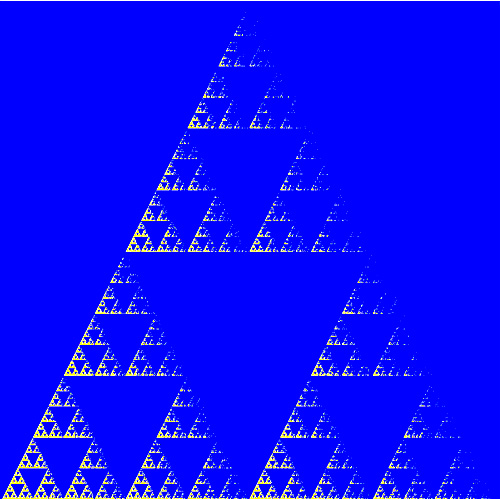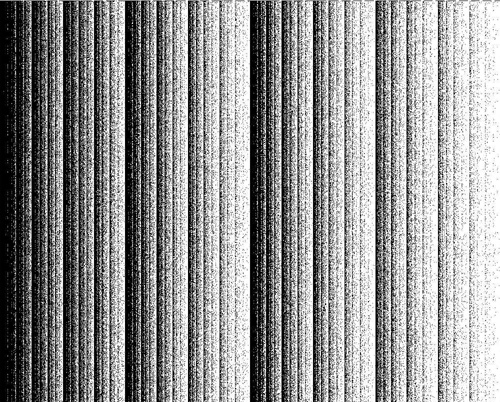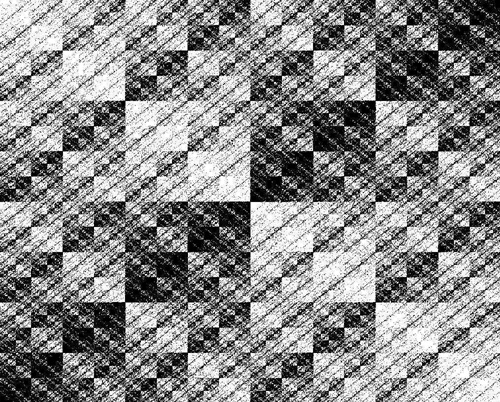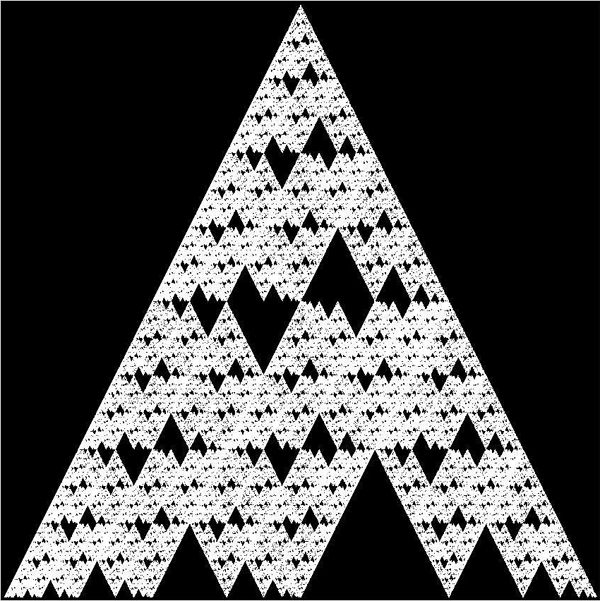The Chaos Game: Varying Pobabilities
Here are some examples of familiar fractals drawn using the chaos game with unusual probabilities.
See the commentary for W 2000 and W 2002
for a description of how to draw fractals using the Chaos Game.
These images weree made with the Chaos Game applet.
These images were mad with the Chaos Game applet (yellow/blue), or
the Fractal Pattern VB program (black/white).
The Sierpinski TriangleIFS. Probabilities 0.75, 0.125, and 0.125 for p1,
p2, and p3. Here lens 1 is the bottom left, lens 2 the bottom right, and
lens 3 in the top middle.
See Figure B.1 on page 924 of the text for a 3-dimensional version of this.

The Full Square IFS. Probabilities 0.4, 0.4, 0.1, 0.1 and 0.4, 0.1, 0.4, 0.1 for p1,
p1. p3, and p4 respectively. Here lens 1 is the bottom left, lens 2
is the bottom right, lens 3 is the top left, and lens 4 is the top right.


Here's an object that was drawn with the chaos game, but is not a fractal (it is not exactly self-similar).
To draw this, the Sierpinski
IFS was used. The sequence { s1, s2, s3, . . . } that was used in the game was
constructed by first generating a random sequence of 1' s, 2' s and
3' s with equal probabilities, and then removing all occurences of the string 12 from
the sequence (which imples that no region with address that contains the string 21 is present in the image).
This image was drawn with the Modified Chaos Game applet (written by Danny Heap).




